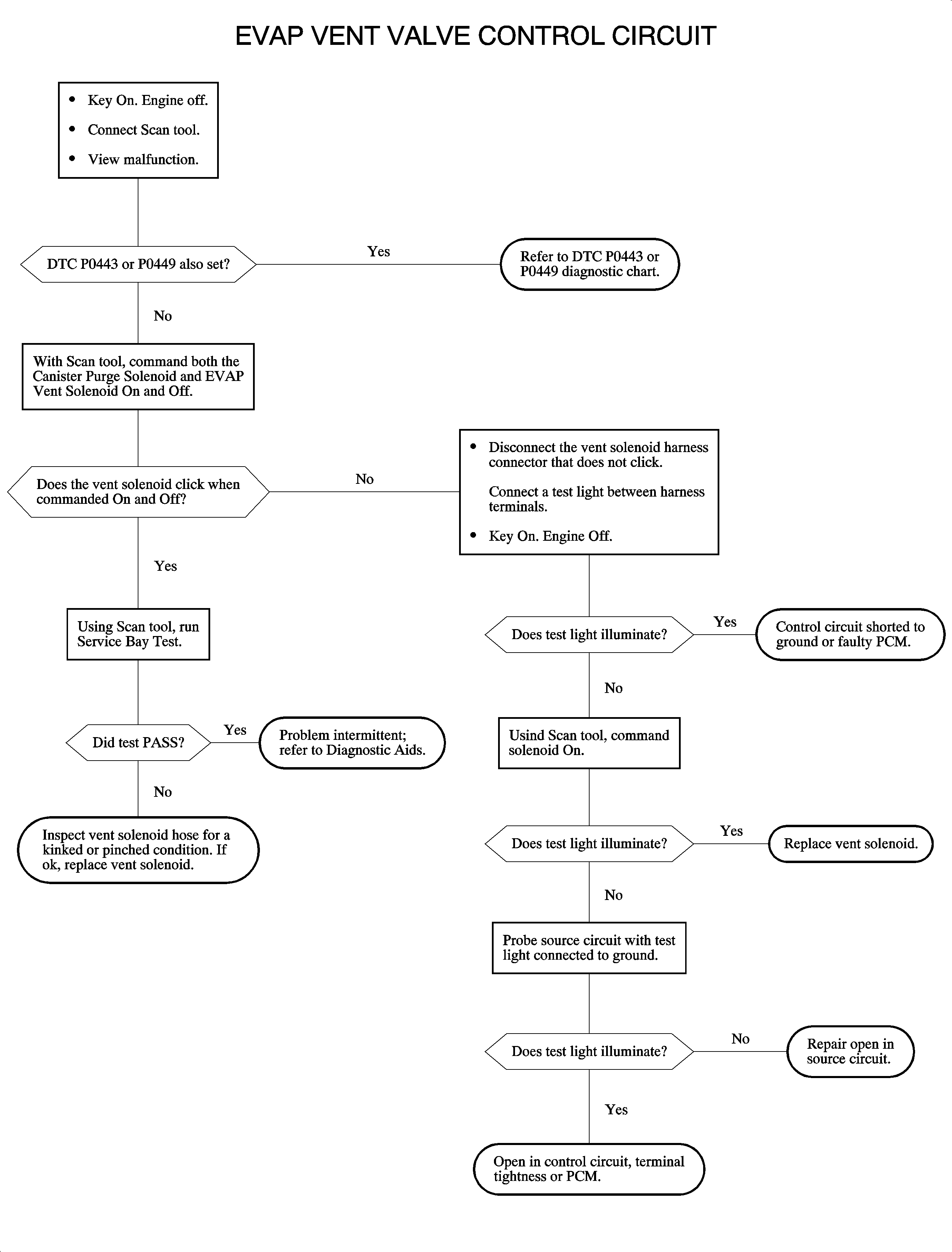Circuit Description

The evaporative emission system is tested with on-board diagnostics by applying
pressure, or vacuum, to the system and monitoring pressure decay. The PCM monitors
the vacuum level through the fuel tank vapor pressure sensor. At the appropriate time,
the EVAP vent solenoid is commanded closed and the EVAP canister purge valve is commanded
to a fixed duty cycle, allowing the engine to draw a vacuum on the entire evaporative
emission system. After a calibrated vacuum level is achieved, the EVAP canister purge
valve is turned OFF, sealing the system. A restricted or blocked EVAP canister path
is detected by opening or releasing the vent solenoid and monitoring for a rapid decay
in pressure. With the EVAP vent solenoid open, any vacuum in the system should release
rapidly unless the path is blocked. A blockage can be caused by the following conditions:
| • | A faulty canister vent solenoid |
| • | A plugged, kinked, or pinched vent hose |
| • | A shorted EVAP vent solenoid driver circuit, which should set DTC P0449 |
| • | A plugged EVAP canister |
Conditions for Setting the DTC
| • | The barometric pressure is greater than 80.8 kPa. |
| • | Both the ECT and IAT are between 5-32°C (41-90°F)
at engine start up. |
| • | The IAT and ECT are within 10 degrees of each other at start up. |
| • | The fuel tank level is between 15-85 percent. |
| • | The engine run time is greater than 2 seconds. |
| • | DTCs P0105, P0107, P0108, P0112, P0113, P0117, P0118, P0125, P0452, P0453,
and P0500 are not set. |
| • | The EVAP system is unable to release vacuum when the diagnostic test is
run. |
Diagnostic Aids
Check for the following conditions:
| • | A kinked or pinched canister vent solenoid hose |
| • | A canister vent solenoid stuck in the closed position |



